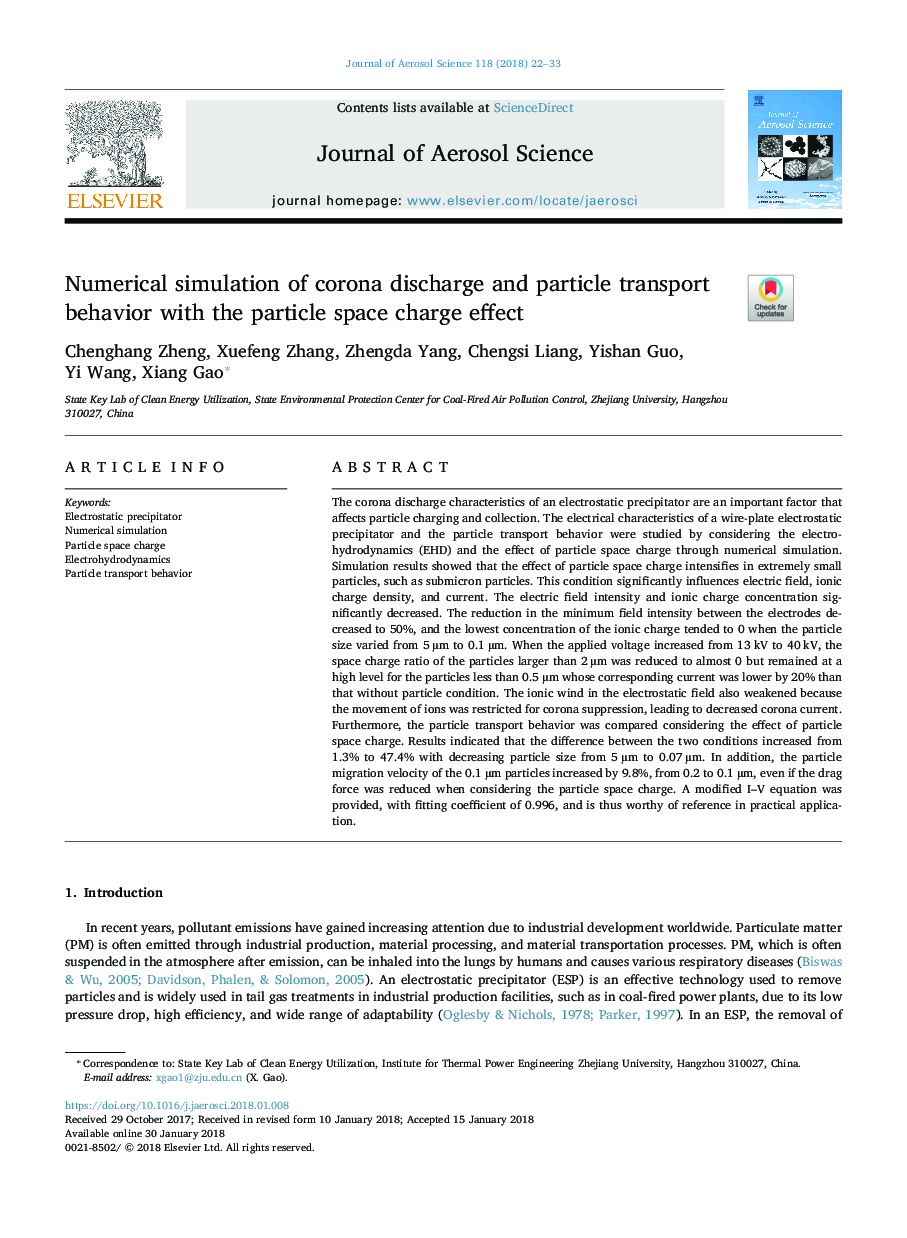| کد مقاله | کد نشریه | سال انتشار | مقاله انگلیسی | نسخه تمام متن |
|---|---|---|---|---|
| 8865279 | 1620705 | 2018 | 12 صفحه PDF | دانلود رایگان |
عنوان انگلیسی مقاله ISI
Numerical simulation of corona discharge and particle transport behavior with the particle space charge effect
ترجمه فارسی عنوان
شبیه سازی عددی از تخلیه کرونا و رفتار حمل و نقل ذرات با اثر شار فضای ذرات
دانلود مقاله + سفارش ترجمه
دانلود مقاله ISI انگلیسی
رایگان برای ایرانیان
کلمات کلیدی
رسوب الکترواستاتیک، شبیه سازی عددی، شارژ فضای ذرات، الکترو هیدرودینامیک، رفتار حمل و نقل ذرات،
موضوعات مرتبط
مهندسی و علوم پایه
علوم زمین و سیارات
علم هواشناسی
چکیده انگلیسی
The corona discharge characteristics of an electrostatic precipitator are an important factor that affects particle charging and collection. The electrical characteristics of a wire-plate electrostatic precipitator and the particle transport behavior were studied by considering the electrohydrodynamics (EHD) and the effect of particle space charge through numerical simulation. Simulation results showed that the effect of particle space charge intensifies in extremely small particles, such as submicron particles. This condition significantly influences electric field, ionic charge density, and current. The electric field intensity and ionic charge concentration significantly decreased. The reduction in the minimum field intensity between the electrodes decreased to 50%, and the lowest concentration of the ionic charge tended to 0 when the particle size varied from 5 µm to 0.1 µm. When the applied voltage increased from 13 kV to 40 kV, the space charge ratio of the particles larger than 2 µm was reduced to almost 0 but remained at a high level for the particles less than 0.5 µm whose corresponding current was lower by 20% than that without particle condition. The ionic wind in the electrostatic field also weakened because the movement of ions was restricted for corona suppression, leading to decreased corona current. Furthermore, the particle transport behavior was compared considering the effect of particle space charge. Results indicated that the difference between the two conditions increased from 1.3% to 47.4% with decreasing particle size from 5 µm to 0.07 µm. In addition, the particle migration velocity of the 0.1 µm particles increased by 9.8%, from 0.2 to 0.1 µm, even if the drag force was reduced when considering the particle space charge. A modified I-V equation was provided, with fitting coefficient of 0.996, and is thus worthy of reference in practical application.
ناشر
Database: Elsevier - ScienceDirect (ساینس دایرکت)
Journal: Journal of Aerosol Science - Volume 118, April 2018, Pages 22-33
Journal: Journal of Aerosol Science - Volume 118, April 2018, Pages 22-33
نویسندگان
Chenghang Zheng, Xuefeng Zhang, Zhengda Yang, Chengsi Liang, Yishan Guo, Yi Wang, Xiang Gao,
